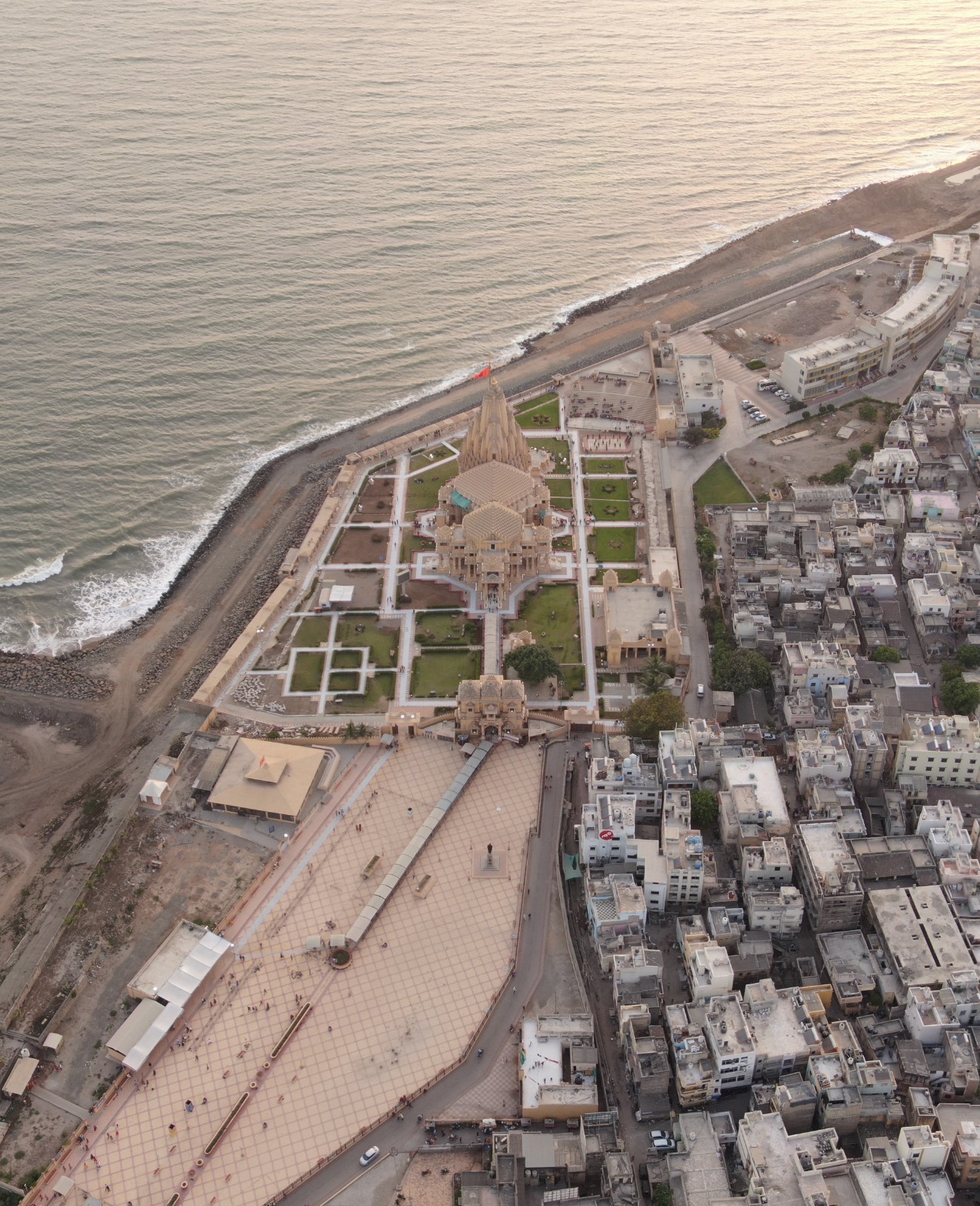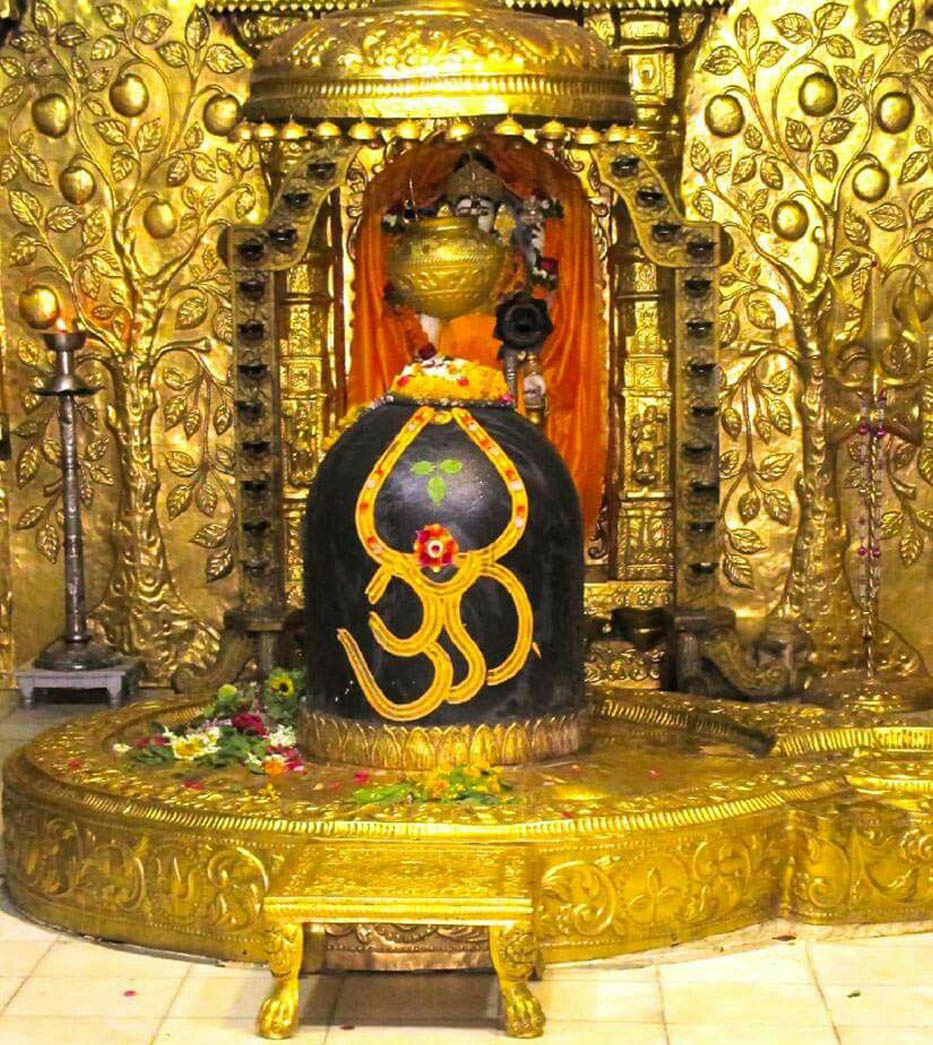
Somnath Temple
The famous pilgrimage site of Sri Somnath is the first of the 12 jyotirlinga shrines that are regarded as the manifestation of the Lord Shiva Himself.
History Behind the Somnath Temple
The existence of this first jyotirlinga makes this site very important to the ardant devotees of Lord Shiva.
As per this story Soma, the Moon God was married to 27 daughters of the famous king named Daksha Prajapati. All the wives received the finest treatments in their in-law’s abode but not all of them were happy. Why you may ask? The answer: Out of all his 27 wives, the Moon God loved Rohini much more than others which made his 26 beloveds feel neglected.
Tired of not being able to win their husband’s affection, the 26 daughters went to narrate their dismal plight to their father. Daksha Prajapati advised the Moon God to treat all his daughters equally but the latter did not pay any heed to his father-in-law’s plea for three times in a row. Infuriated by this absolute insult Daksha Prajapati cursed the Moon God who lost his precious luster.
The loss of Moon God’s effulgence led to some of the disastrous calamities. So Lord Brahma advised the Moon God to visit a place called Prabhas Kshetra and perform rituals to please Lord Shiva. Happy with his devotion and strict penance of six long months, Lord Shiva redeemed the curse and then everything was back to normalcy- no more destructive calamities.

The Birth of the Temple
In return Moon, God built a temple in gold to honor Lord Shiva during the era that is known as Satya Yug. The legend also states that it was again built by Ravana, in silver during another era known as Treta Yuga. It was followed by Lord Krishna who built it using sandalwood in the timeline of Dvapara Yuga. Yet again, it was built by the Emperor Vikramaditya, in stone at the end of another great era ‘Kali Yug’.
In the vicinity of the temple, there is a pond (kunda) that is believed to be established by the demigods and is known as the Someshwara Kunda. Locals and the devotees truly believe the kunda to be a reservoir of miraculous powers and anyone who takes a dip in it will get rid of all the diseases.
This temple has always been the most important pilgrimage site since ancient times. It is believed that worshipping in the temple is highly auspicious as the ones who pray whole-heartedly get forgiven for all their sins and misdeeds.
Moreover, devotees are showered with the continuous blessing of Lord Shiva and Mother Parvati and enjoy a beautiful life sans many hurdles. Yet another reason to visit the temple is to easily attain the path of salvation.
This might come as an interesting significance that the temple will continue to exist every time there is a reconstruction of the world. However, as per the Skanda Purana, the temple will be known as ‘Pran Nath Temple’ once Lord Brahma will give shape to a new world after the present one comes to an end.
Architectural Significance
The temple has three major parts the Garbh Griha, Sabha Mandap, and the Nritya Mandap with a peak that’s nearly a whopping 155 feet high. The present-day temple structure took nearly 5 years to complete and has an incredible division of space and light. The architectural magnificence of this temple is truly a sight to behold!
Another noteworthy mention is the presence of floral alankara of the massive Shivlinga. Additionally, the flag mast over the temple’s peak is 37 feet long which is changed 3 three every single day.
Yet another measure of its greatness can be seen in the sculptures of Lord Brahma, Lord Vishnu, and Lord Shiva that adorn the walls of the temple. It is written in the Prabhaskhand of the Skanda Purana, in answer to the question of Goddess Parvati, Lord Shiva states that the temple has been named 8 times.

The Somnath Jyotirlinga Temple has many fascinating stories, and miracles woven around the untold divine power of the temple.
• It is said that the famous Syamantak Mani, also called the Philosopher’s stone is safely kept inside the hollowness of the Shivalinga in the temple. The Mani is linked with Lord Krishna and is believed to be a magical stone that can produce gold. Beliefs also state that the stone has many radioactive properties and alchemic associated with it, that can give rise to a magnetic field that can make it stay afloat in the air above the ground.
• The original temple hall was supported by 56 pillars and there was only a single deepam that gave light to the entire temple due to the enormous amount of jewels studded on the murtis and walls which reflected the single deepam and gave light to the whole temple.
• In the center of the hall, the greta murti of Somnath was made of stone and was 5 yards in height, two of which were sunk in the ground.
• The belly of the original murti was broken and looted by Sultan Mahmud as it was hollow and filled with precious gems.
• Swami Gajanand Saraswati, a renowned Hindu scholar, states that the temple was first built 7,99,25,105 years. He based this information backed by the mention in the Prabhas Khand of Skand Puran.
• Another fascinating fact is that from the place where the Somnath temple is presently based, there is no land between its shore and Antarctica. The Somnath temple is constructed on the Indian region that is the first point on land in the north till the south-pole, on that particular longitude.
• As per the Skanda Purana, there have been 6 Brahmas so far and the present era one is the 7th Brahma who is known as the Shatanand. Lord Shiva states that in the 7th Yuga, the name of the temple is Somnath while in the last one it was called Mrityunjaya.
Invasions of the Somnath Temple
The walls of the temple have withstood many attacks and external invasions but have been resurrected time and again to its grandeur.
It was during the Christian era, the first version of the temple had come into being. It was during the 408 AD- 768 AD, due to the initiative of the Vallabhi king that the temple was built the second time. Many foreign invaders, like the Arab governor of Sindh, Al-Junayd during his invasion of Rajasthan and Gujarat, have tried to destroy the temple several times.
Then again the temple was built for the third time by the Gurjara-Pratihara king Nagarbhata II in red sandstone. It was in 1024, during the reign of Bhima I; Mahmud of Ghazni had raided Gujarat and plundered the Somnath Temple of its abundant wealth of 20 million dinars. It was during this time that the invaders even broke the holy jyotirlinga that caused an enormous restlessness amongst the devotees.
Although there were many attacks by different Muslim invaders, the temple was rebuilt magnificently every time it was rebuilt. The present-day temple was built in 1947 by Sardar Patel in Chalukya style architecture. It is also known as the Kailash Mahameru Prasad Style and is a reflection of the great craftsmanship and skill of Sompura Salats, who are known masons of Gujarat.
The Glory of Somnath Mahadev
Somnath temple witnessed an unimaginable rush of devotees who contributed wealth to add opulence to the temple. The grandeur of the temple was such that that everyday scented water was got from Haridwar and Prayag Kashi for the consecration in the temple. They also had flowers which were specially sourced from Kashmir to offer to Lord Shiva.
There was a time in history when the rituals were carried out by not one but 1000 Brahmanas. And there were three hundred and fifty dancers and musicians who would be engaged in the service of the Lord Somnath.
The service would be an absolute sight to look at and the entire atmosphere would reverberate with a complete divine symphony of drums, bells, and cymbals for 30 minutes.

